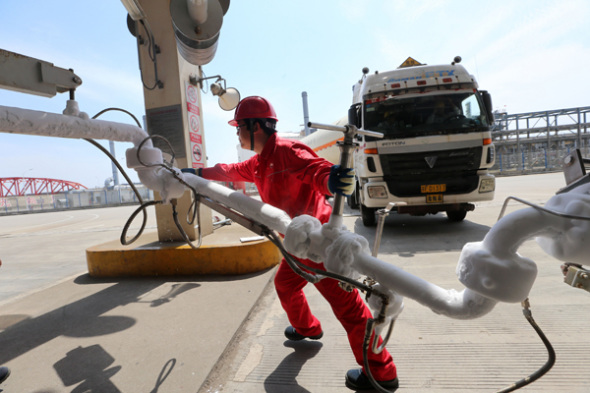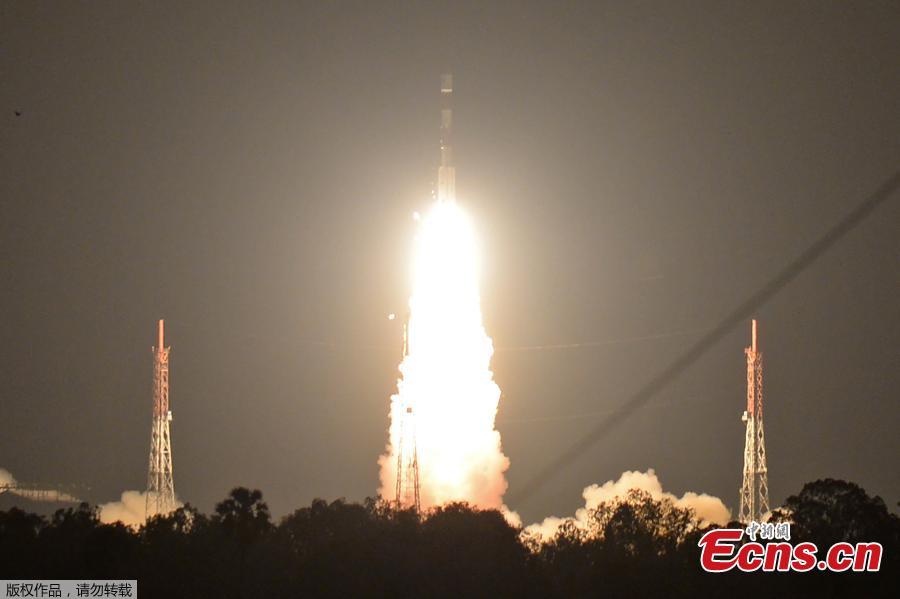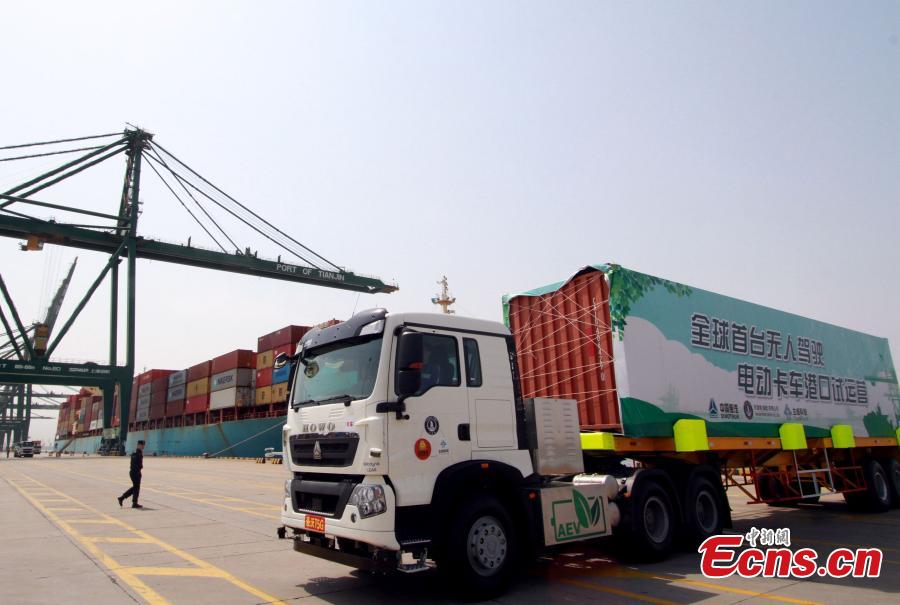
An employee shifts the LNG pipeline after filling the transport vehicle at the CNPC LNG center in Jiangsu province. (Photo for China Daily/Xu Congjun)
Liquefied natural gas or LNG exporters in the United States, which have been eyeing opportunities in China, might rue the current Sino-U.S. trade friction, said analysts.
Demand for LNG in China has soared in recent years following accent on gas usage in place of coal and other polluting fuels.
"We can't exclude the possibility that the U.S. may lose the opportunity to export more LNG to China if the trade war spreads from LPG to oil and LNG," said Wang Lu, an Asia-Pacific oil and gas analyst at Bloomberg Intelligence.
Analysts also expressed concern that any escalation of tensions between the world's two biggest economies would have a negative impact on global oil prices.
Bloomberg Intelligence expects that Chinese LNG imports may grow at compound annual growth rate of 17 percent from 2017 to 2020. Simply put, the rise in domestic production and pipeline imports are not enough to meet the soaring demand, necessitating more LNG imports.
China has surpassed South Korea to become the world's second-largest LNG importer in 2017. China's imports grew 46 percent on the year in 2017 to 37.8 million mt, and are expected to reach nearly 49 million mt in 2018, Platts data showed.
In the past few years, Beijing adopted many policies targeted at curbing coal output, reducing coal power generation, and promoting natural gas consumption, in order to increase the share of gas in the energy mix from the targeted 10 percent by 2020 to 15 percent by 2030.
According to Wang, the U.S. was China's fifth-largest LNG supplier and exported 1.53 million tons of LNG to the country last year, which were from the spot market.
Private companies such as Guanghui Energy and ENN Group have also joined State-owned CNOOC, PetroChina and Sinopec in the LNG receiving terminals business, increasing channels for spot LNG imports from the U.S., she said.
BI estimates last year's LNG trade from U.S. to China was worth about $644 million, or 0.2 percent of the trade gap of $375 billion. While U.S. Commerce Secretary Wilbur Ross encourages China to import more LNG to reduce the deficit, the contribution would be marginal.
According to Wang, though it can't close the gap, increasing exports of oil and LNG to China could reduce the U.S. trade deficit with China, albeit marginally.
China proposed an extra 25 percent tariff on a list of U.S. products, such as soybean and pork, last week in response to the steep U.S. tariffs on $50 billion worth imports of Chinese products.
S&P Global Platts estimated earlier China would account for 21.5 percent of U.S. LNG exports this year, putting China on track to potentially becoming the largest buyer of U.S. LNG this year.
Besides LNG, there would be a risk for oil prices if China uses the bazooka option on U.S. crude oil exports, said Geneva-based consultancy Petromatrix. Bazooka option refers to a possible steep increase in Chinese tariffs on crude oil imports from the U.S., which could potentially penetrate several layers of the U.S. economy. China is the second-biggest importer after Canada of U.S. crude oil, to the tune of about 400,000 barrels per day.
"If China were to impose counter tariffs on U.S. crude, it would become quickly very heavy for the U.S. supply and demand picture, resulting in U.S. crude oil price pressure that would have a negative impact on global oil prices," Petromatrix said in a report.


















































